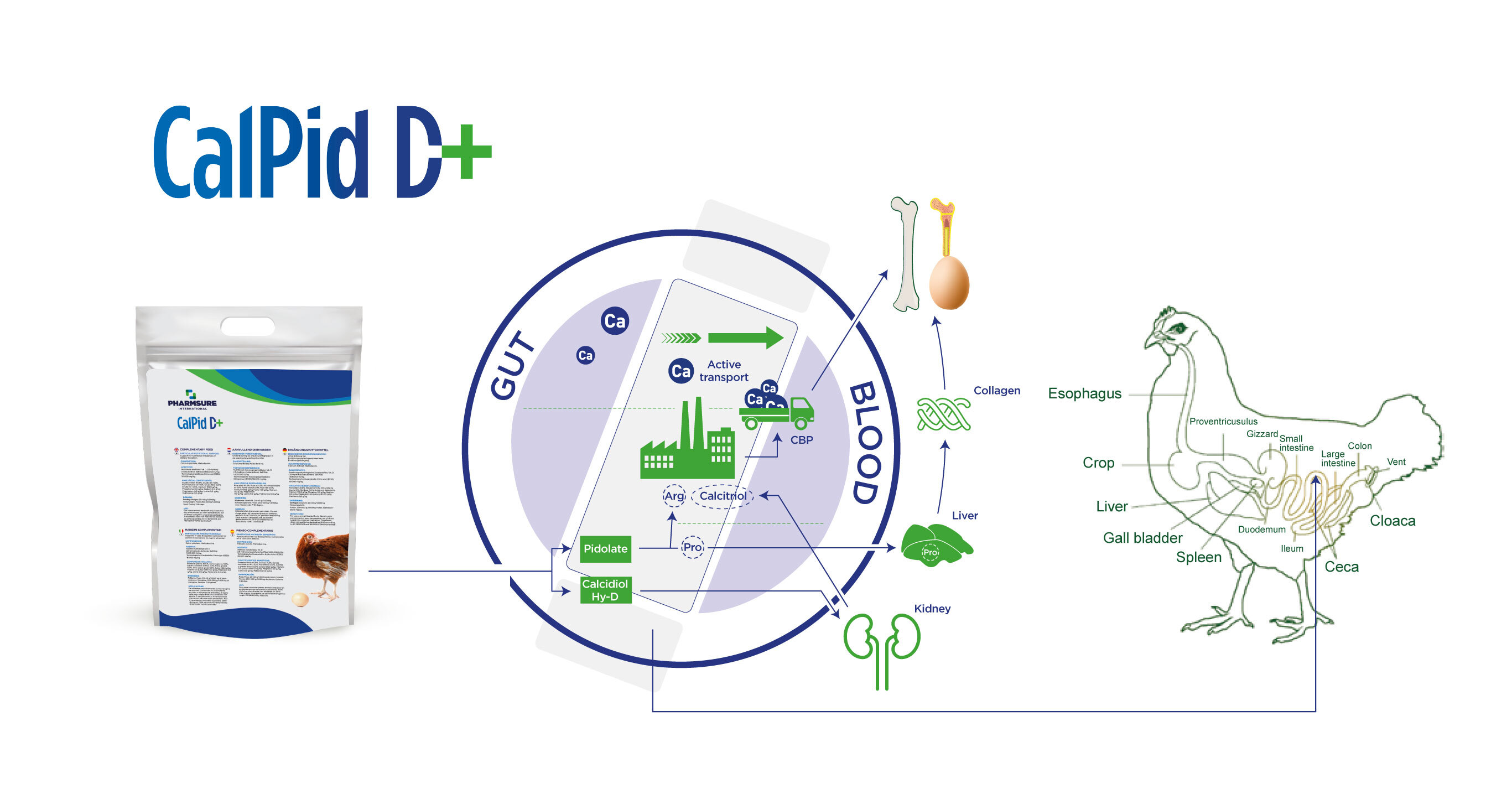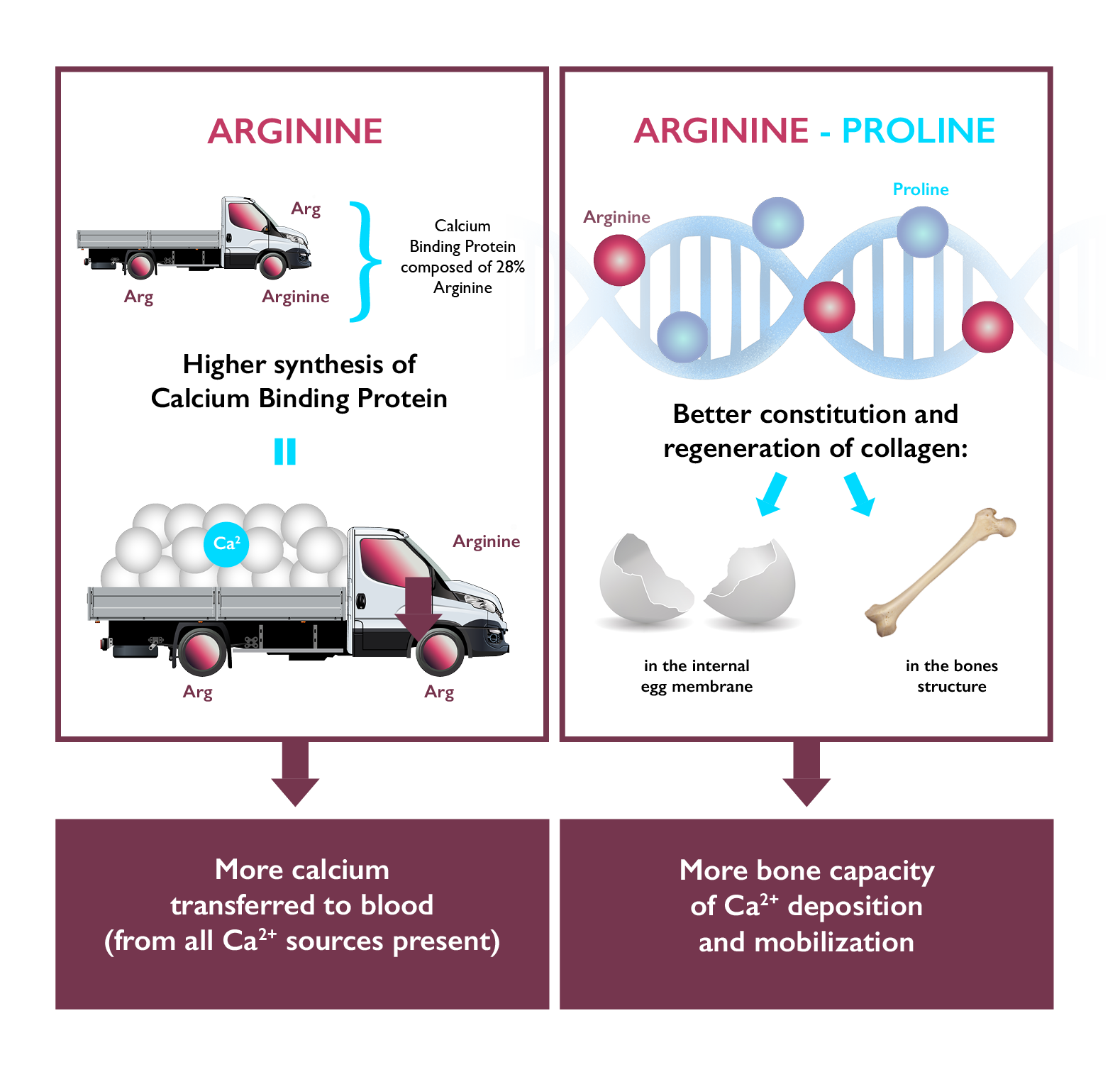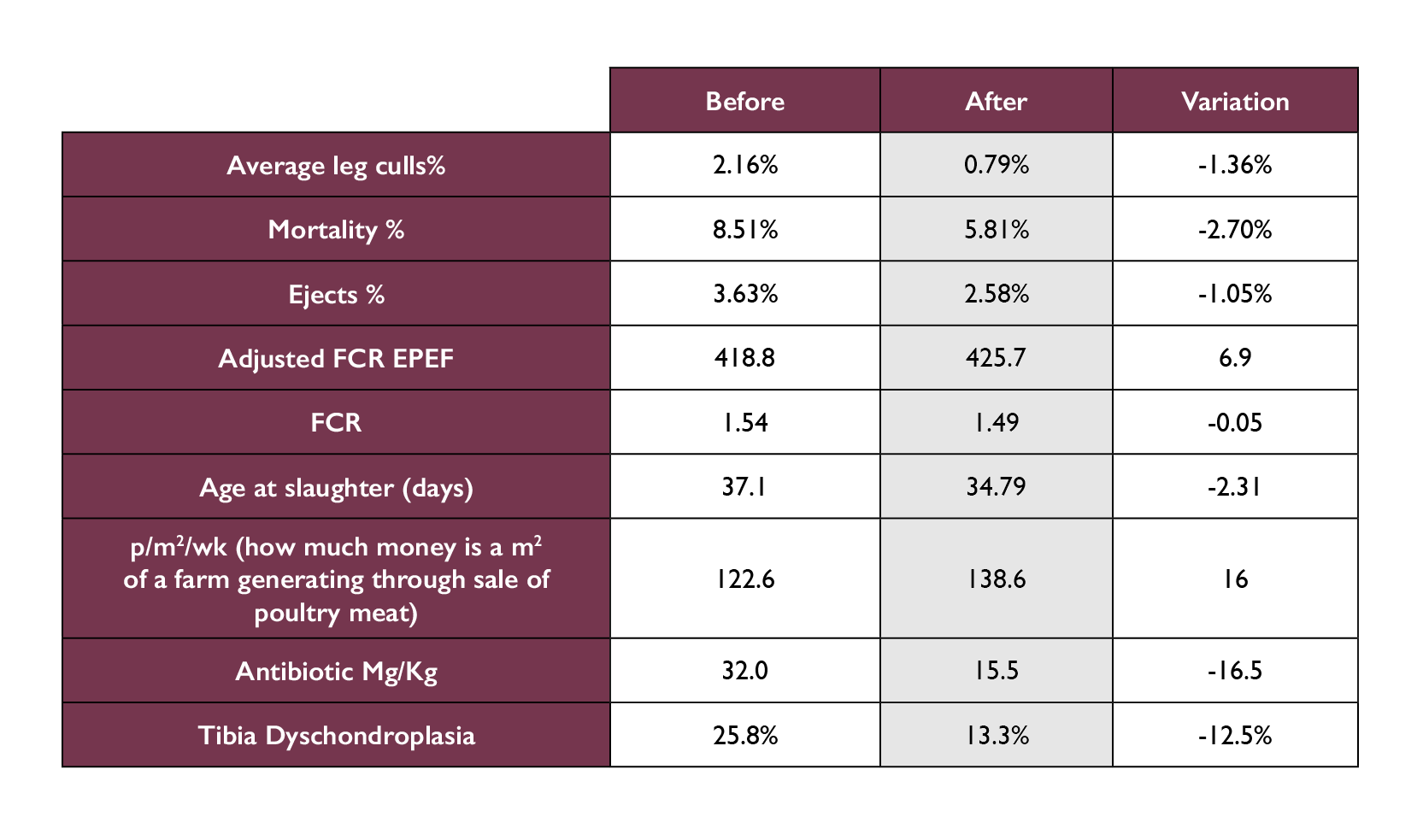



Are you aware of how much lameness affects your economic return?
CalPid D+ YOUR solution to enhance animal welfare maximising productionOne of the greatest challenges in modern poultry farming is ensuring the welfare of fast-growing broilers, which often face serious lameness issues. Among these, Bacterial Chondronecrosis with Osteomyelitis (BCO) emerges as a significant concern, being the most prevalent cause of lameness in commercial broilers. This infectious disease poses a major challenge to the poultry industry, affecting both animal welfare and operational profitability.
Calpid D+ is a key product, highly water soluble, designed to improve animal welfare and farm KPIs, directly translating into better performance margins. Calpid D+ offers enhanced skeletal integrity and, consequently, fewer scratches, cellulitis, and carcass damage during processing.
How can CalPid D+ help?
Unlike other products on the market, CalPid D+ promotes efficient calcium absorption thanks to the synergistic action of its two active ingredients: Vitamin HyD® and calcium pidolate.

- On one hand, Vitamin HyD®, the active form of Vitamin D with higher absorption and effectiveness, increases the expression and synthesis of calcium channels and Ca transport proteins within the enterocytes, enhancing calcium absorption even in animals challenged by stress, age, and/or malabsorption issues.
- Calcium pidolate, on the other hand, with its two molecules of pidolic acid, which are precursors of arginine and proline, key components of bones and eggshells, provides the essential elements that enterocytes need to build calcium transport proteins, Calbindin.
It is NOT a calcium source.

This synergistic solution enhances the active transport of calcium in enterocytes, contributing to the formation of bones with better bone density, prepared for the current challenges of mechanical stress that ultimately result in bacterial invasion, joint degeneration, septicaemias, and cellulitis, impacting production and economic return. It optimises the absorption of dietary calcium without needing to modify the formulation or affect the Ca/P ratio!
A study in the United Kingdom over 10 production cycles
In this context, we present the results of a two-year study conducted by the prestigious English poultry veterinary service, Slate Hall Veterinary Practice, and its Clinical Director, Dr. Adrian Knoetze., on a farm with 190,000 broilers, covering 10 production cycles, 5 before and 5 after starting to use CalPid D+. The farm had a history of high levels of bacterial lameness, processing rejections, and water hygiene problems, particularly due to the presence of sewage fungus (Sphaerotilus natans) in the drinking system.
The usage protocol was based on veterinary experience and knowledge of calcium metabolism by the responsible veterinarian, Dr. Knoetze.
In chicks, there are two critical phases of calcium need, so a two-intervention protocol was established:
- The first intervention, from day 0 to 5, aims to support the deficiency of Vitamin D and available calcium during the first days, which is due to the decrease in Vitamin D levels absorbed from the yolk sac, combined with the low level of feed intake observed in chicks during their first week of life.
- The second intervention, starting from the second week, is aimed at supporting the bird as its skeletal growth rate increases, especially after the dietary transition. The evaluation of tibial dyschondroplasia showed improved mineralisation and growth plate integrity at 21 days of age, supporting early use of the product.
The farm had previous experience using additional Vitamin D supplements; however, health and production outcomes were comparatively better when using CalPid D+.
The study revealed significant improvements in health and performance indicators in chickens, compared over an average of five production cycles:
- Leg Health: 63% fewer discards due to lameness.
- Antibiotic Use: 51% reduction.
- Processing Rejections attributed to the farm: 29% reduction.
- Tibial Dyschondroplasia: Incidence reduced by 50%.
- Economic Gain: 13% increase in financial return per square metreper week.
Better skeletal integrity translates into fewer birds developing osteomyelitis and septicaemia. As a result, better gait scores in the houses, fewer birds scratching and developing cellulitis. The reduction in septicaemia is believed to be a direct effect of lower osteomyelitis, as it often progresses to septicaemia during the production cycle. This works by reducing microfractures and tears in bone vasculature when birds subject their legs to rotational stress.
In conclusion, better mineralisation and skeletal system integrity resulted in better growth rates and fewer bacterial lesions observed at slaughter, resulting in significantly lower processing rejections. Improved leg health also resulted in reduced antimicrobial use while providing better performance margins.
These benefits underline the importance of adopting innovative solutions that improve animal health and welfare and offer significant economic returns for producers. This study reaffirms CalPid D+'s commitment to offering an advanced and effective solution for one of the most critical problems in modern poultry farming, providing a stronger skeleton and greater economic returns for producers.
Continued use of Calpid D+ translates into better animal welfare by reducing lameness while significantly increasing economic return
Health parameters:
- Significant reduction in mortality rate and tibial dyschondroplasia.
- The percentage of lameness discards significantly decreases.
Feed efficiency:
- Improves feed conversion ratio (FCR).
- Improves European Poultry Efficiency Factor (EPEF).
Productive parameters:
- The age at slaughter can decrease with the use of CalPid D+, due to optimal slaughter weight being reached earlier.
- The use of antibiotics significantly decreases in cases of bacterial lameness.
- Decrease in the percentage of rejections during processing.
- Increase in production and economic return per square metre per week.










